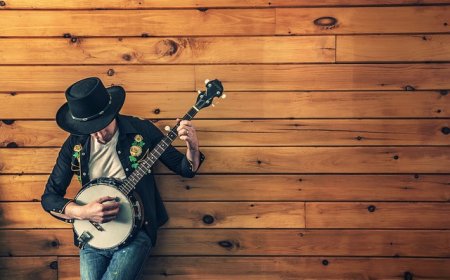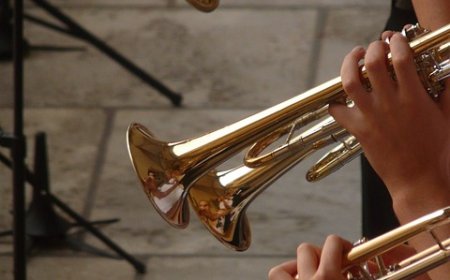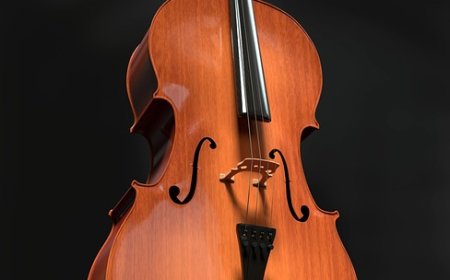Bagpipes Facts for Students | Learn How the Scottish Bagpipes Work and Sound
Discover how bagpipes work, what they’re made of, and their rich history in Scottish and world music. Learn about famous players, fun facts, and how to play them.

🎼 All About the Bagpipes
🥇 Introduction
The bagpipes are one of the world's most interesting and powerful wind instruments. Known for their loud, steady drone and melody, bagpipes have become a musical symbol of Scotland, but versions of bagpipes exist in many parts of the world. Their rich, buzzing sound comes from air being squeezed through reeds, and they are often played at ceremonies, parades, and military events. Whether in a marching band or on a quiet hillside, bagpipes are a musical voice of tradition and pride.
🎶 What Are Bagpipes?
Bagpipes are wind instruments that use a special air bag to keep a constant stream of air flowing through reeds inside pipes. This air makes sound in multiple pipes at the same time-some playing a steady background drone and one playing the melody.
The most famous version is the Great Highland bagpipes of Scotland, but bagpipes also exist in countries like Ireland, Spain, France, Bulgaria, India, and the Middle East.
They have a strong, continuous sound that is hard to miss-and once you hear them, you'll never forget it!
🧩 Parts of the Bagpipes
Bagpipes may look complicated, but each part plays a key role in producing their unique sound:
-
Bag - A leather or synthetic air reservoir that holds the air
-
Blowpipe - The tube the player blows into to fill the bag with air
-
Chanter - The pipe with finger holes used to play the melody
-
Drones - Pipes that create constant background notes; usually three on Highland pipes
-
Reeds - Small vibrating pieces of cane or plastic that create sound when air passes through
-
Stocks - Connect the pipes to the bag and hold them in place
-
Drone Cords - Decorative cords that also help hold the drones steady
The player squeezes the bag with their arm while blowing or using a bellows, keeping the air pressure steady so all the pipes sound at the same time.
⚙️ How Do the Bagpipes Work?
Bagpipes work by blowing air into a bag and squeezing the bag with your arm to push the air through reeds in the pipes. The chanter plays the melody like a flute, while the drones play a constant note underneath the melody.
The player must learn how to:
-
Keep the airflow steady
-
Use proper fingering techniques on the chanter
-
Tune the drones so they harmonize with the melody
Because the sound never stops (even when the player takes a breath), the music has a continuous, flowing quality unlike most other instruments.
📜 History of the Bagpipes
Bagpipes have existed for over 2,000 years, with early versions found in Ancient Rome and the Middle East. They likely developed from simple reed flutes with air bladders.
The Great Highland bagpipes became a part of Scottish culture during the Middle Ages. By the 16th century, they were used in military, ceremonial, and folk music. In battles, pipers played to inspire soldiers and communicate commands.
Today, bagpipes are played in:
-
Military and police bands
-
Folk festivals
-
Weddings and funerals
-
Parades and sports events
They remain an important part of Scottish national identity and continue to be played all over the world.
🥁 Famous Bagpipe Players
-
Gordon Duncan - A Scottish bagpiper known for blending traditional and modern styles
-
Fred Morrison - Famous for his energetic solo performances and competitions
-
Angus MacColl - A top competitor in the solo piping world
-
Carlos Núñez - Spanish musician known for blending bagpipes (gaita) with Celtic and world music
-
Richard Parkes - Pipe major of the Field Marshal Montgomery Pipe Band, one of the world's best
-
Chris Armstrong - A champion solo piper and pipe band leader in Scotland
🎶 Learning to Play the Bagpipes
Learning the bagpipes takes patience and air control. Beginners usually start with a practice chanter, a small flute-like version of the melody pipe. Once students learn finger positions and breathing control, they move on to the full bagpipes.
Skills needed include:
-
Developing strong lungs and air control
-
Learning proper finger placement
-
Practicing steady drone tuning
-
Playing traditional tunes and marches
Bagpipes are often taught in piping schools, pipe bands, or with private instructors.
😄 Fun Facts About the Bagpipes
-
The Great Highland bagpipes can be heard up to 5 miles away!
-
The bag is traditionally made of animal skin, but now synthetic bags are common.
-
Not all bagpipes are blown by mouth-some use bellows, like in Irish uilleann pipes.
-
There are over 100 types of bagpipes around the world!
-
In Scotland, pipers once led soldiers into battle.
-
The long drone pipes make the steady background notes.
-
You don't stop the sound by breathing-the bag keeps going!
👧 Kid-Friendly Summary
Bagpipes are loud wind instruments from Scotland. You blow air into a bag and squeeze it to make music come out of pipes. One pipe plays the tune and others play steady background notes. Bagpipes are used in parades and ceremonies and sound proud and powerful!
📚 Vocabulary Words
Bagpipes – A wind instrument with a bag, chanter, and drone pipes
Drone – A pipe that plays one long note all the time
Chanter – The pipe where the melody is played
Reed – A small piece that vibrates to make sound
Blowpipe – The tube you blow into to fill the bag with air
Bellows – A pump used instead of blowing (on some bagpipes)
Piper – A person who plays the bagpipes
Resonator – A part that makes the sound louder
❓ Interactive Quiz (8 Questions)
1. What country are the most famous bagpipes from?
A. France
B. Scotland
C. Canada
D. Germany
2. What is the name of the pipe that plays the melody?
A. Drone
B. Blowpipe
C. Chanter
D. Flute
3. How many strings do bagpipes have?
A. 6
B. None
C. 12
D. 4
4. What part of the bagpipes holds the air?
A. Drone
B. Chanter
C. Bag
D. Reed
5. What sound do the drone pipes make?
A. Melody
B. Clicking
C. Background hum
D. Drumming
6. What do pipers start with when learning?
A. Full bagpipes
B. Guitar
C. Practice chanter
D. Clarinet
7. What is the part you blow into called?
A. Bellows
B. Mouthpiece
C. Reed
D. Blowpipe
8. Who was a famous modern Scottish bagpiper?
A. Gordon Duncan
B. Beethoven
C. Ravi Shankar
D. Yo-Yo Ma




















































